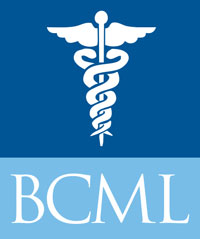The University Health Insurance Plan (UHIP) is an obligatory insurance health plan that caters to Canadian citizens, international students, dependents and more. However, do you know how to apply for UHIP? Are you familiar with the steps for applying for UHIP?
This knowledge is especially important for expatriates who aren’t covered under the Ontario health insurance plan (OHIP).
The overall expense of medical treatments and services in Canada can climb quickly. Hence, knowing how to get a UHIP plan will save you a lot of money. UHIP is there to shoulder the cost of any health services you need.
Plus, applying for UHIP is a straightforward process. Here’s all you need to know!
Getting Started: What is UHIP?
As a student in Ontario, health insurance may appear complex to you. Here are the finer details of Canada’s comprehensive health insurance provisions.
Canadian Student
Health insurance is a piece of cake for Canadian students. The reason for such ease is because, as a Canadian citizen, you’re eligible for the Ontario Health Insurance Plan (OHIP).
Numerous health providers take UHIP and OHIP, and you can access the list via the UHIP website.
Students of Canadian nationality will need to visit the Service Ontario Centre to do their OHIP registration. You’ll need the following documents to complete the registration:
- Proof of Canadian Citizenship, e.g. birth certificate
- Proof of Residency in Canada, e.g. gas bill
- Proof of Identity, e.g. driver’s license
Once you have these essential documents, you can enroll for full medical coverage. Hence, you can visit any health care provider in Ontario and get the necessary treatment.
Non-Canadian Student
Canada is home to a rich and diverse population of international students seeking quality education. Furthermore, how to apply for UHIP has a different answer for international students.
As an international student in Ontario, you’ll be automatically enrolled in the UHIP. Typically, the university will add health insurance fees to your tuition, giving you access to various basic medical needs.
As an international student, you’re less likely to have an OHIP, making the UHIP of utmost importance. So, let’s discuss where to apply for UHIP as an international student.
The first thing to do is to locate a Service Ontario Center. Next, you’ll need these important documents confirming your immigration status as a legal occupant in Ontario.
- Application Form
- Passport Photographs
- Cash for Payment of UHIP (If payment isn’t part of your tuition)
- University Acceptance Letter
- Temporary/Permanent Resident Card: This card legitimizes your immigration status
- Proof of Residence in Ontario: e.g. Ontario driver’s license, electricity bill, and lease agreement.
- Proof of Identity: International passport or a national ID card will do.
Presenting these documents will ease your UHIP application process. Upon the approval of your UHIP, it’s important to know the plan only has a one-year coverage period. Therefore, you’ll have to renew your UHIP after one year.
UHIP is mandatory even if you’re an exchange student living in Ontario for a relatively short period. In this case, the UHIP will cover you for the short duration of your stay in Ontario.
Related Article: How Can a Student Get Health Insurance in Canada?
What Health Services Does UHIP Cover?
Before applying for UHIP, it’s essential to understand the level of coverage this health insurance plan offers.
Hospital Usage
Generally, UHIP will cover emergency hospitalization and grant you total coverage on the first four days of admission. You also get access to use the radiotherapy and respiratory facilities.
Health care services that take UHIP will also provide medication during your stay. You’ll also get access to physician services for checkups.
Doctor Services
You’ll get access to doctors for diagnosis and treatment of injuries, pregnancy-related care and one health exam per annum.
Additionally, what is UHIP without added access to a nurse practitioner? You can employ the services of a nurse practitioner and get coverage on about 90% of your fees.
Eye Care
UHIP also covers some eye examinations. You’re entitled to one annual eye examination under the care of an optometrist.
Oral Care
When you apply for UHIP, you also get coverage for your dental cavities. You are eligible for dental procedures like corrective jaw surgeries. You can also go for an annual dental check-up to spot and treat any cavities early.
Dependent Medical Tools
Another benefit of your UHIPap application is access to assistive medical equipment. For instance, UHIP coverage extends to patients who need respirators for respiratory-related illnesses.
What doesn’t OHIP cover?
There are many more services that UHIP covers, but it’s also essential to know its shortcomings. As great as UHIP is, there are some medical services it doesn’t cover.
Healthcare providers in Ontario won’t accept UHIP for medical situations like immunization, eyeglasses, and dental surgery.
UHIP Enrolment for Dependents
In cases when you have dependents like a sibling, spouse or offspring, you can apply for UHIP on their behalf. The process ensures they get adequate medical coverage during their stay.
Here’s how to get UHIP for your dependent. Once they enter the country, you’ll have to take their documents to the Service Ontario Center.
The primary documents needed for enrolling a dependent are:
- The passport page of the dependent with their copies
- Your student number
- Proof of your dependent’s arrival date.
You must enrol the dependent in less than 30 days after arrival. Failure to adhere to this stringent rule can yield a $500 fine.
How Much Does UHIP Cost?
Now that you know what UHIP is, let’s break down the amount you’ll be paying for the plan and the criteria surrounding each payment.
| One Year Plan | Monthly($) | Per Term($) | Annually($) |
| For student | 65 | 255 | 760 |
| For one dependent | 65 | 255 | 760 |
| For two dependent | 130 | 510 | 1,520 |
Print your UHIP Card
After you apply for UHIP, print out the physical card from your school’s portal. Your card will grant you access to insurance-covered treatment in a medical emergency. Hence, it’s always better to have a physical copy on you.
Related Article: Is UHIP a Government Health Plan?
Final Thoughts
There are advantages to new students in Ontario completing their UHIP applications. It’s even better when you realize how seamless applying for UHIP coverage is. Simply find a Service Centre Ontario near you and go along with the necessary documents as described above.
The next step is identifying clinics near you that take UHIP. We’re Lockwood Clinic, and we do just that. Call 416-929-1900 to discuss our UHIP-covered health services and how you can take full advantage.










